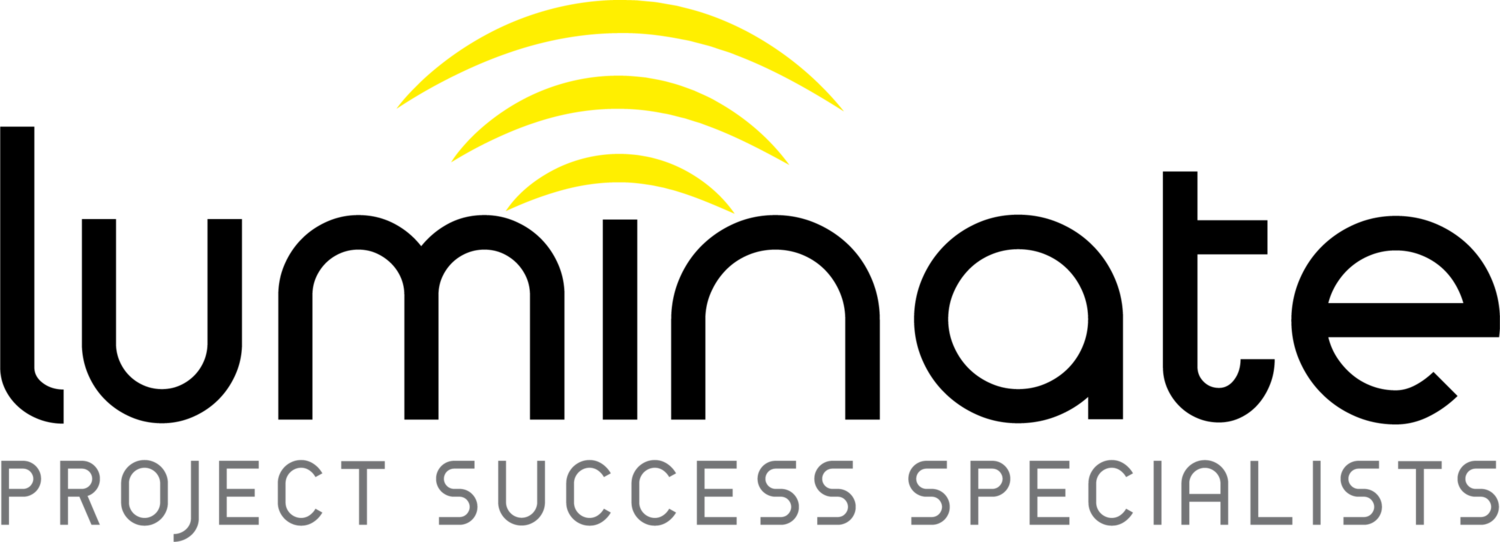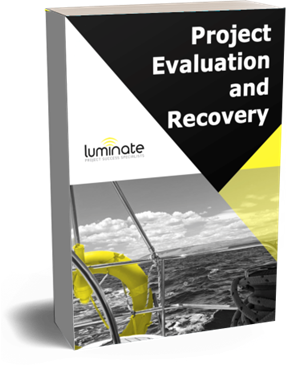
Jul 3, 2023
You’re on holiday relaxing with your family when you spot a jigsaw puzzle on the shelf. Eager to dive in, you grab the box and… oh no, it’s a Wasgij. Who on earth designed this mind-boggling enigma? Unlike a ‘normal’ puzzle, you can’t simply toss the pieces together because you have no idea what the result is supposed to look like.
In project management, a Wasgij puzzle is a great analogy. Winging it will cost you time and patience, and you might throw in the towel. But figuring out a game plan and using the clues to paint a clear picture will significantly improve your project success rate. It’s the same logic for project benefits.
Project mobilisation determines the actions and strategies needed to achieve a project’s core benefits. It focuses on creating milestone plans, structures, governance arrangements and processes to deliver on those benefit promises. But realising project success – and therefore delivering business value through benefits realisation – can be easier said than done. So, here’s what you need to keep in mind:
1. Talk about benefits with the business
Unfortunately, the word ‘benefit’ might not mean the same thing to your business leaders as it does to you. So, ditch the jargon and speak their language. It’s about capturing their attention and showing them how your project will deliver tangible benefits. In other words, connect the dots between your project and their bottom line. Trust me – they’ll perk up when they see the link between project benefits and their performance bonus..
2. From day one, measure and track project benefits
If you wait until the project goes live to assess benefits, you might as well try to solve a puzzle blindfolded. Too often, project benefits are eroded by scope creep, especially when the “can we just” stakeholder requests start flying in, and you’re forced to gold-plate the solution.
This is where measuring and tracking project benefits right from the start will help you stay focused. Remember, a systematic approach gets the best results even with the most complex puzzle.
Here’s what you need to tick off:
- Define project benefits in the mobilisation phase.
- Set clear objectives – the desired benefits and outcomes of the project.
- Outline the actions and strategies needed to realise the identified benefits.
- Establish metrics and targets early.
- Continuously track and measure the actual progress towards achieving the identified benefits.
- Keep a lookout for early warning signs of impending challenges.
- Involve key stakeholders throughout the process to gain their support and insight.
- Regularly communicate the status of benefits realisation to stakeholders, providing updates on progress and any adjustments made.
- Be open to adapting the benefits realisation plan based on evolving project circumstances.
3. See a problem? Speak up early
Sometimes projects will get in a messy ‘negative equity state’ where benefits become elusive. For example, consider a project focused on implementing a new customer relationship management (CRM) system. The anticipated benefits include improved sales efficiency, enhanced customer satisfaction and increased revenue. But if the CRM system lacks user-friendly features or fails to integrate with existing systems, the expected benefits can slip away – creating inefficiencies and frustrated employees.
Instead of getting another cup of tea and hoping you can find the answer with fresh eyes, toughen up and speak up! Hard decisions may loom, but facing your reality head-on is the mark of a true project manager. So, gather your courage, assemble your facts and have those difficult conversations. After all, in project management, courage isn’t a virtue – it’s a necessity.
4. Optimism is a double-edged sword
Acknowledging potential pitfalls keeps you vigilant throughout the project. Here are six sneaky ways optimism can sabotage your projects and undermine benefits:
- Classic overconfidence. Where the infamous Dunning-Kruger effect (a cognitive bias whereby people with low ability, expertise, or experience, tend to overestimate their ability or knowledge) kicks in, watch out for unrealistic deadlines and underestimating what’s required.
- Oversimplification. Oh, the temptation to rely on assumptions instead of hard facts! This can lead to lofty, overambitious goals that are unrealistic.
- You are avoiding pain. If you constantly convince yourself that you’ll catch up at the next milestone, you’ll never truly address the issues that lurk beneath the surface.
- Confirmation bias. It’s that alluring tendency to ignore the 99 signs pointing to project issues and focus solely on that one glimmer of positivity. We’ve all been there.
- The availability cascade. Like a broken record playing in our heads, we repeat the project’s grand vision so much that it blurs our perception of realistic expectations.
- Perceptual bias. When under pressure, we tend to zoom in on individual details, neglecting the crucial step of stepping back and assessing the complete picture of the project.
Good enough, is good enough …by definition
Remember, in the complex Wasgij realm of project management: good enough is good enough. Don’t let the elusive pursuit of perfection hinder your progress towards achieving the desired benefits. Instead, stick to the vision, remain focused on what you asked for, and resist the temptation to pile on unnecessary functionality that inflates costs and derails schedules. It’s delivering what was promised that truly matters.

Jun 2, 2023
If you’ve been paying attention to the news, you’ll know that the NZ government recently unveiled plans for a second Auckland harbour crossing, with construction due to start in 2029. Sound familiar? I’m not surprised. Since the mid-1970s, there’s been chatter about another bridge — and an ever-growing list of potential options. At this stage, the old saying ‘I’ll believe it when I see it’ comes to mind. But the announcement got me thinking.
One of the most significant risks to any project is ‘inaction’. If decision makers are glacial in making decisions, it can be the death knell for a project. Despite this, broken decision making processes are just as prevalent as the common cold. According to one McKinsey survey, fewer than half of the 1,200 managers questioned said that decisions are timely. Decision making is a high–stakes poker game. The slower you are to place your bet, the more likely you’ll have your bluff called. And in project land, it’s a costly move.
The opportunity costs of slow decision making
Slow decision making can trigger significant problems on several fronts. Let’s first talk about the money side of things. Weekly cash burn can be in the tens or hundreds of thousands of dollars for larger projects. What might only be a few days of pondering can be massive in budget terms. Secondly, there’s over-optimism. Projects are often based on tight schedules, sometimes with zero contingency for slippage. So, a delay caused by sluggish or apprehensive decision making not only compounds ‘the budget problem’ but also puts the delivery of other projects in jeopardy too. For example, other projects may depend on a vacated test environment, a specialist resource to be freed up, or a system component to be delivered to allow e2e testing. Fail to make a decision fast enough and you risk multiple projects grinding to a halt.
Make faster, better decisions
You can only make good or fast decisions, not both. Really? Not really. There’s a strong correlation between quick decisions and good outcomes, and based on experience, I know you can have the best of both worlds.
If your project manager has ticked off these three things at the start of the project, they should have no compunction holding decision–makers to account:
- Set the correct project roles, responsibilities and expectations at the beginning of the project.
- Establish decision making and escalation protocols.
- Make sure everyone is committed to those protocols.
Sponsors – read the tea leaves
Leadership around decision making doesn’t just sit with the project manager. Sponsors who sit on the sidelines are just as responsible for the deluge of costs that come with slow decision making. So if your project manager isn’t making the decisions they should, and you can see hidden issues getting in the way of your project team meeting their objectives, as a sponsor, you must step in. That foresight requires reading the tea leaves and can help sponsors act quickly before the problems fester and rot.
So, who makes the decision?
Devolve decision making to the people best equipped for the job. Who those people are will depend on the impact of the decision being made and the authority level required to make the final call. But ultimately, make the decision fast — and execute it immediately. You may end up tacking like a sailboat, and you may not have unanimous agreement, but at least you’ll keep moving forward.
The real cost of slow decisions in a project environment
The opportunity costs of slow decision making are staggering; hundreds of thousands of hours are lost yearly — the equivalent of millions of dollars in wages. I wonder how much the Harbour Bridge debate has racked up in opportunity costs since the mid-1970s?
There are ample opportunities for companies to improve their decision making processes and drive both good and quality outcomes. Establish decision making protocols right at the start, ensure everybody is on the same page, and make it crystal clear when decisions need to be escalated and to whom.

May 5, 2023
The other day, I explained the importance of project governance to a non-IT person. When their eyes stopped glazing over, they asked, “Why can’t you choose a better word?” As it turns out, governance is seen as a silver bullet for all sorts of corporate sins. Is the company underperforming? Just blame governance. Want to force an issue to the forefront? Governance is the go-to weapon. But let’s get real. When businesses use governance as a quick solution rather than a way of adding value, it’s like trying to realign a broken leg with a band-aid. You’re not going to fix anything.
So, what is good project governance?
It’s equal parts nurture and discipline
Being on a project governance team is like parenting. You’re not there to be your child’s best friend. You’re there to guide them on the journey of becoming a fully-baked adult. You set boundaries and give instructions to make sure they stay on track.
Let’s bring that metaphor into the realm of project management. If the governance team’s scope, delivery approach, communications, roles and responsibilities are followed, that’s when the magic of growth (or, in this case, the desired outcome) happens. Conversely, breach those boundaries, and like an errant child, it will likely result in tears – and ultimately project failure.
Lean on the three main pillars of project governance
- Efficiency builds an understanding around ‘cause and effect’, giving you fast decision-making and a steadfast focus on achieving the desired outcome.
- Accountability sets the ground rules and provides traceability of actions and clear roles and responsibilities.
- Legitimacy provides the mandate and confidence to act.
Actual governance is about saying no
It always surprises me how often businesses take on ego-driven projects rather than strategic ones. But what’s the point if the project doesn’t support the company’s mission and goals? ‘No contingency’ is the most significant sign of too much ego (or optimism), and I see it a lot. Nobody has bothered to specify the best and worst-case scenarios – or even put a plan B in place. More often than not, no one is comfortable asking questions. But when projects are inherently risky, they should be treated as such. A good governance team will be able to see when there’s no tangible benefit, and they’ll have the courage to say no. Finding the sweet spot is critical – you don’t want it to be too heavy or burdensome, but you also don’t want it to be too light and impotent.
Find your ‘unicorn’ governance team
If you’re sick of nasty surprises, project governance might be the issue. The fix is simple. You need better people – a group of unicorns.
An effective project governance team (or steering committee, if you’re averse to the g-word) helps guide the project and the business. It’s not there to hold hands or worry about hurt feelings at night. It ensures every dollar spent ladders back to the organisation’s strategy.
How do you carefully construct a functioning and influential steering committee for project success? It all comes down to the people you choose.
Align or fail
If your project steering committee isn’t aligned on the business problem that needs to be solved, the impact of that problem on the business and the vision of the desired outcome … then you shouldn’t start the project. It’s that simple.
What’s more, you must choose the right people with the right EQ, personality type, skill and will to get the job done. That includes a project manager with sufficient experience, capability and maturity to agree and maintain alignment with the governance team. The most successful project managers are people who read the room and have the emotional intelligence to see early when certain people or groups are misaligned.
Governance for governance’s sake can suffocate a project. It’s critical to regularly re-calibrate a governance forum to ensure the project is always getting the right type of governance in the right areas. Wait too long, and critical decisions get delayed. Meet too often, and you force your project team into a constant state of collating and reporting that can impact the focus on project deliverables.
Governance – it takes the A-team
Once you understand that governance is a crucial enabler for successful project delivery, it will be your project’s most precious resource. Find your unicorn team, and those people will align delivery capability with organisation strategy. They’ll also build the capability of your people to align your projects, programmes or portfolios to support better business outcomes.
Projects require big decisions. Projects demand constant monitoring and guidance. Projects naturally come with a lot of pressure and a lot of heated discussions. That’s when emotions run high. If you’re ready to apply the good-parenting playbook to your governance team, the team at Luminate has the experience and EQ to defuse emotions with facts.
After all, your project is too important to have the ‘B team’ running it.

Apr 7, 2023
I recently had to (re)sit through the film Titanic with my kids. When the ship sank, it was one of the most spectacular project failures of the last two centuries. It got me thinking – what went wrong? Was it the lack of lifeboats, unsafe ship design and a rather large iceberg? Or did the captain also ignore early warning signs that they were going too fast? Did he fail to give importance to the massive amounts of ice surrounding him, focusing on nothing but the speed to satisfy the owners of White Star Line? Captain Smith perished at sea with 1500 others, so we will never know exactly what was going through his head. But it does get you thinking about the value of paying attention to early warnings.
Don’t ignore the red flags
Gut feelings are never baseless – they come from observed patterns and years of experience. Unfortunately, when there’s no concrete proof that something’s wrong, people will often ignore the signs – especially if acknowledging the problem will cause disruptions.
You know the scenario – the PM has a sixth sense that the project is going off the rails, but they don’t have all the facts. When they try to tell their steering committee something is wrong, they’re reassured that it’s all fine, to ignore their gut and keep going. Three months on, that gut feeling turns out to be on the money, the project has racked up another million dollars, and they’re way past the deadline.
Think you have a perfect plan? You don’t
The Titanic was touted as ‘unsinkable’, and this perception was a major problem. If people hadn’t been convinced it was perfect, they may have noticed the very real design flaws and packed a few more lifeboats.
When something feels off, PMs need to forget the dream of a flawless plan and have the courage to act – even if it means holding senior people to account or admitting they made a mistake. If they can convince the steering committee of the warning signs, sponsors can commission an independent evaluation and avoid major hiccups. It may be painful in the short term but avoids much more pain down the track.
Trust but verify — with a project fitness test
Let’s get back to Captain Smith of the Titanic debacle. I can imagine his crew told him something felt off, but he ignored them because of his unshakeable belief in the ship. But what if a third party had come in and smacked him over the head with a photo of the iceberg? Things may have turned out a bit differently. You can dodge an iceberg, but only if you know it is coming – an independent voice evaluating the project will help cut through.
Save money
It’s almost impossible to change course at the last second when you’re going full steam ahead. For the Titanic, this was deadly. For PMs, it’s costly. Regular project fitness tests will speak with the crew and scan the horizon, ensuring any minor issues or risks don’t become expensive problems.
Dodge the iceberg
The cost of an audit is like paying for cruise control. Even a one-week slip in your timeline can blow the budget. With pre-scheduled inflight reviews, you’re protected against schedule and budget blowouts before it’s too late.
Get quality assurance
Get a drone shot of your ship’s sailing route and a weather report. Project assurance checks make sure the work you’re doing is taking you in the right direction to achieve your goals.
When you’re too close to a project, it’s almost impossible to look at it objectively – there’s always a bias, even if you think there’s not. The people who got you into a mess aren’t the ones who will get you out of it. Fitness tests need to be done by external parties to avoid over optimism and hidden agendas.
Intuition – a finger in the wind
Instinctively knowing something is wrong is a powerful tool in decision-making, but it can’t be relied on completely. It’s important to balance gut feelings with careful analysis so you always base your decisions on facts.
We help our customers by providing independent evaluation. We approach each situation with an open mind, critical thinking and a healthy dose of scepticism. Defusing emotion with facts, so you can restore confidence to your stakeholders and control to the project … allowing you as sponsor to get back to your day job.

Mar 3, 2023
My car just failed its warrant of fitness – happy new year to me. It was a bit of a surprise. My car will flash and beep at me because I’m speeding or have low windscreen fluid, but could it tell me when my tyres were bald? It could not.
After blaming the worn-out tyres on the teenager, I realised that projects could do with warning lights and fitness checks, too. Bear with me as I extend this metaphor all the way out.
Our car warning lights are the controls – the regular governance meetings and reporting. The WOF checks are the inflight audits and reviews, which give us that critical oversight of the project.
The ignorance trap
The underlying cause of so many project failures? Ignorance. This can be down to people unconsciously hiding or downplaying issues, being overconfident enough to not think there’s an issue or not seeing the real complexity. Hidden issues won’t just make it hard for your PM and team to reach their objectives. Eventually, they’ll rot the entire project from the inside, leaving it in tatters and your respect as the sponsor in ruins.
It means successful projects always need a warts-and-all view. Because eventually, you’ll have to face up to reality. The worst way to do that is to experience a catastrophic failure, a problem big enough to make people notice – an investor or client pulls the pin, cash runs out and everything skids to a halt. The best way is to get ahead of all those potential issues with a project fitness test.
I’ve seen the value of this first-hand – some of the best projects I’ve worked on had regular reviews built in, and some of our best-performing customers do this, too. Here’s why your projects need the same.
Get your project fitness test
It goes without saying that if you can’t see issues, you can’t fix them. A clear-eyed view of what’s happening means you can step in before you end up in a ditch.
Save money
Keep driving on my bald tyres, and sooner or later I’d crash. If I’m lucky, it’d only cost me money. Regular project fitness checks let you catch your metaphorical bald tyres early. With the right audits, reviews and fitness checks, you can catch those minor issues before they turn into big expensive problems.
Protect against blowouts
Inflight reviews are the best way to protect against schedule and budget blowouts. They’re a bit like getting insurance – the audit will almost certainly cost less than the cash burn from slipping in the timelines by even one week.
Get quality assurance
You might be on schedule and on budget, but are you on point? Project assurance checks make sure the work you’re doing will achieve your goals. Looking at just the facts gives you a clear view of the project’s chance of success, helping you win the trust of stakeholders.
Here’s the thing. You can’t really do a fitness test in-house – there’s simply not enough perspective and too many conflicting priorities to get your people to self-assess gaps. Even if they could do that, you’re still gambling on your people having the courage to act, and maybe admit they were at fault.
An external view is essential. It takes away the hidden agenda and the desire to smooth over failings.
Let’s look under the bonnet
If you’re already starting to see slips, it’s worth remembering that the people who got you into this mess can’t get you out of it. Bringing in new management, without preconceived ideas, perceptions or opinions, unpeels the facts from the emotions. Experienced people will also refer to ‘war stories’ drawn from other large-scale project recoveries, showing the delivery team the way forward. They know how to bring a team on the delivery journey and understand what will get your project over the line. And you? Well, you can get on with your day job.
Luminate is the independent expert you need to keep your project on the road. Our project fitness tests give you a top-line view of how you’re tracking and any signs that the wheels could come off down the road. The project fitness test covers:
Business-case credibility – are the right scope and controls in place?
Get this wrong, and your project is doomed, however well-aligned your team is.
Resources – do you have the right people in the correct roles?
It’s common to overestimate a team’s capabilities and skills, and it can take a while for those gaps to reveal themselves. We’ll take a big-picture view to spot the gaps before they cause problems.
Buy-in from all stakeholders – is the project set up for success from the beginning?
It’s not just about how well the team can do the job – they’ll also need good working relationships and buy-in from other teams and management. So, we look at that too.
Measurement – what does success look like, and how will it be measured?
You need to trust your PM while also verifying. Our project fitness test makes it easier to do that, with clearly-defined measures of success.
Is your project road-worthy?
Ok, final car metaphor. If you’re driving around with a project that’s not fit for purpose, you need to know about it now before things spin out of control. While you might have warning lights all set up, these won’t give you the full picture. For that, you need a fitness test – it’s the closest thing you’ll get to ensuring a successful outcome.







